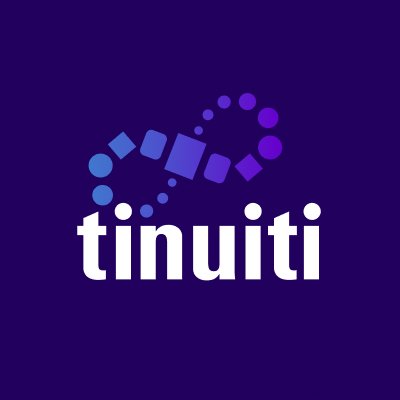Essential Features Every School Management System Must Have in 2025
Discover the ultimate School Management System designed to boost efficiency. Manage students, staff, and resources effortlessly while improving learning outcomes.

The educational technology landscape has evolved dramatically, with schools demanding more sophisticated, integrated, and user-friendly management systems. Modern educational institutions require comprehensive platforms that streamline operations, enhance communication, and support data-driven decision making. Understanding the essential features for 2025 helps administrators select systems that will serve their communities effectively both now and in the future.
Core Student Information Management
Centralized Student Database
A robust student information system forms the foundation of effective school management. This feature must provide comprehensive student profiles, including enrollment history, academic records, attendance tracking, behavioral notes, and family contact information. Real-time data synchronization ensures all stakeholders access current information instantly.
Academic Progress Tracking
Advanced gradebook functionality with customizable grading scales, weighted categories, and standards-based assessment capabilities enables teachers to monitor student progress effectively. Integration with curriculum standards and learning objectives helps educators identify gaps and adjust instruction accordingly.
Attendance Management
Automated attendance tracking through multiple methods, including manual entry, barcode scanning, and RFID integration,n streamlines daily operations. Real-time notifications to parents about absences and tardiness improve communication and student accountability.
Communication and Collaboration Tools
Multi-Channel Communication Platform
Modern schools require integrated messaging systems supporting email, SMS, push notifications, and in-app messaging. Automated communication workflows for routine announcements, emergency alerts, and personalized student updates ensure consistent information flow between all stakeholders.
Parent Portal and Mobile Access
Dedicated parent portals providing real-time access to grades, attendance, assignments, and school communications strengthen family engagement. Mobile-responsive design ensures accessibility across all devices, accommodating diverse family technology preferences.
Teacher Collaboration Spaces
Built-in collaboration tools enable teachers to share resources, coordinate lesson plans, and communicate about student progress. Professional learning communities within the system foster institutional knowledge sharing and best practice development.
Financial Management Integration
Comprehensive Billing System
Automated fee calculation, invoice generation, and payment processing capabilities streamline financial operations. Multiple payment options, including online portals, installment plans, and financial aid integration,n accommodate diverse family circumstances.
Budget and Resource Tracking
Real-time financial reporting and budget monitoring tools help administrators make informed decisions about resource allocation. Integration with purchasing workflows and vendor management systems provides complete financial oversight.
Scholarship and Financial Aid Management
Sophisticated financial aid processing capabilities, including application management, eligibility verification, and award distribution, ensure equitable access to educational opportunities.
Advanced Analytics and Reporting
Predictive Analytics
Machine learning algorithms that identify at-risk students, predict enrollment trends, and recommend intervention strategies enable proactive educational support. Early warning systems help prevent academic failure and improve student outcomes.
Customizable Dashboard
Role-based dashboards providing relevant metrics and key performance indicators for different user types ensure stakeholders access actionable information efficiently. Real-time data visualization supports quick decision-making.
Compliance and Audit Support
Automated report generation for state requirements, accreditation standards, and federal compliance ensures institutions meet regulatory obligations without manual data compilation.
Security and Privacy Protection
Advanced Data Security
Multi-layered security protocols, including encryption at rest and in transit, role-based access controls, and regular security audits, protect sensitive student information. FERPA and COPPA compliance capabilities ensure regulatory adherence.
User Authentication and Access Control
Single sign-on capabilities, multi-factor authentication, and granular permission settings provide secure yet convenient system access. Integration with existing institutional identity management systems streamlines user provisioning.
Data Backup and Recovery
Automated backup systems with point-in-time recovery capabilities protect against data loss. Disaster recovery protocols ensure system availability during emergencies or technical failures.
Curriculum and Assessment Management
Standards-Based Curriculum Mapping
Comprehensive curriculum management tools that align with state and national standards enable educators to track coverage and ensure educational objectives are met. Pacing guides and scope-and-sequence tools support effective instruction planning.
Assessment and Testing Integration
Built-in assessment creation tools, test scheduling capabilities, and results analysis features streamline evaluation processes. Integration with standardized testing platforms provides comprehensive student performance insights.
Learning Management Integration
Seamless integration with popular learning management systems ensures continuity between administrative and instructional technologies. Assignment distribution, grade passback, and resource sharing capabilities bridge these essential platforms.
Modern Technology Integration
API and Third-Party Integrations
Robust application programming interfaces enable integration with specialized educational tools, library systems, transportation management, and nutrition services. Open architecture supports institutional technology ecosystem development.
Cloud-Based Infrastructure
Cloud-native architecture, providing scalability, automatic updates, and remote accessibility, ensures systems remain current and available. Offline capabilities for critical functions maintain operations during connectivity issues.
Mobile-First Design
Responsive design optimized for mobile devices acknowledges that most users access systems through smartphones and tablets. Native mobile applications provide enhanced functionality and user experience.
Student-Centered Features
Personalized Learning Support
Advanced student management system software incorporates individualized education plan management, learning accommodation tracking, and personalized goal-setting capabilities that support diverse learning needs and promote student success.
Digital Portfolio and Transcript Management
Electronic transcript generation, digital diploma storage, and comprehensive student portfolio capabilities prepare students for college and career transitions. Blockchain integration for credential verification adds security and portability.
Student Self-Service Options
Student portals enabling schedule access, grade viewing, assignment submission, and communication with teachers promote responsibility and engagement in the educational process.
Higher Education Considerations
Alumni and Development Integration
Universities require sophisticated relationship management extending beyond graduation. Comprehensive CRM for Higher Education functionality manages alumni engagement, fundraising activities, and lifelong learning opportunities that strengthen institutional connections.
Research and Grant Management
Advanced features supporting research project tracking, grant application management, and compliance monitoring serve the unique needs of higher education institutions engaged in scholarly activities.
Future-Ready Capabilities
Artificial Intelligence Integration
AI-powered features, including automated scheduling optimization, intelligent tutoring recommendations, and predictive modeling for student success,s represent the cutting edge of educational technology development.
Interoperability Standards
Support for emerging educational data standards ensures long-term compatibility and reduces vendor lock-in concerns while facilitating seamless data exchange between systems.
Conclusion
The essential features outlined above represent the foundation for effective school management in 2025. Institutions should prioritize systems offering comprehensive functionality, robust security, and seamless integration capabilities. Success depends on selecting platforms that not only meet current needs but also provide flexibility for future educational innovations and changing institutional requirements.













































































































































